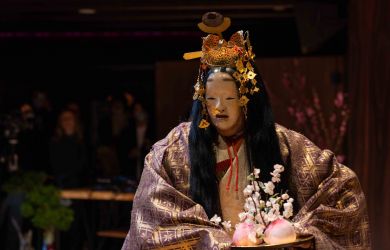
October 22, 2009
Plan of Action
Originally published on metropolis.co.jp on October 2009 As Tokyo rues its loss to Rio de Janeiro in the bid for the 2016 Olympics, Japan is already gearing up for another bash. Metropolis recently obtained a copy of the minutes from a meeting by the Working Group for the Realization of a Successful and Heartful Olympic […]
By Metropolis
Originally published on metropolis.co.jp on October 2009
As Tokyo rues its loss to Rio de Janeiro in the bid for the 2016 Olympics, Japan is already gearing up for another bash. Metropolis recently obtained a copy of the minutes from a meeting by the Working Group for the Realization of a Successful and Heartful Olympic Games in Japan (tentative name), and it’s an eye-opening read…
Perceived reasons for failure of the Tokyo 2016 bid
1. Problem: Lack of “buzz”
Suggestions: Increase advertising expenditure for TV, radio, print, internet, etc.; have a popular musician or group (e.g. SMAP) record a theme song to accompany the bid; create a cute and appealing cartoon mascot with an unforgettable catchphrase; conduct repetitive sound truck campaigns in cities, towns, villages, etc. for a minimum of one year to encourage support of the bid.
2. Problem: Misperception of Tokyo 2016 bid as “too stingy”
Suggestions: Increase proposed large-scale construction projects, infrastructure improvements, etc.; reduce emphasis on environmentalism in favor of “misuse of public funds” and “white elephants” (e.g. committee member Tsukishima proposed that, if bid is mounted by Nagasaki and Hiroshima, a bridge or underwater tunnel be constructed to link the cities).
3. Problem: Lack of public support
Suggestions: Censor reporting of unfavorable opinion polls (committee member Matsumoto observed that said tactic had been used successfully prior to the 2008 Beijing Olympics); award a supplementary income payment (teigaku kyufukin) to citizens who support the Olympic bid through the wearing of T-shirts, singing of songs, dancing of dances, etc.; choose a popular celebrity/celebrities (e.g. SMAP) to be the “image face” of the campaign.






-390x250.jpg)
